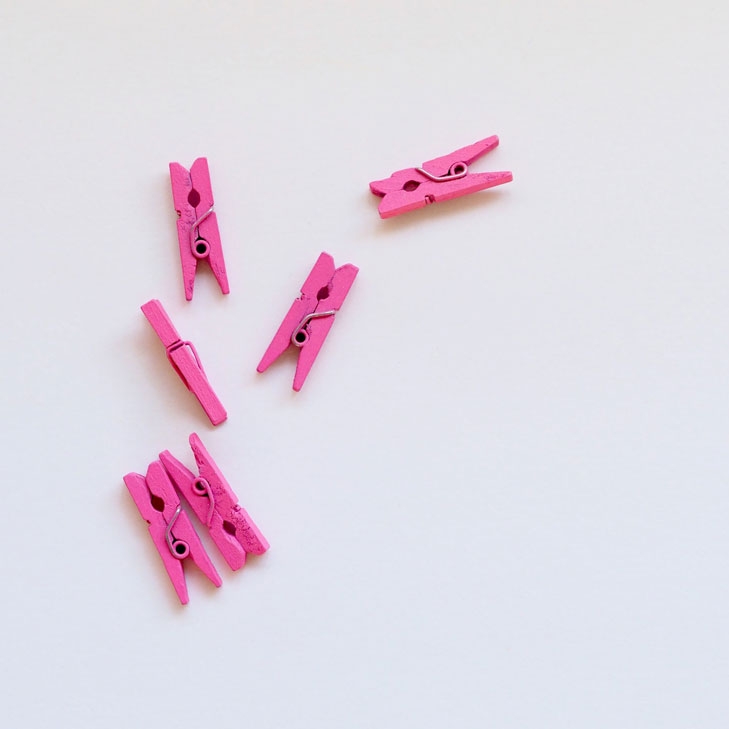Blogging Basics
23 Tips on How to Start a Blog

Ready to take the plunge and begin your blogging career? With more and more tools available every day and our helpful tips to guide you, it’s easier than ever to make a start.
What do you need to know about content and style?
1. Find the right topic for you
While it’s tempting to create a blog around a topic like beauty or wellness that will earn an easy audience, it’s vital that the topic also interests you. Your readers will be able sense the passion in your writing about your chosen topic. So even if it might be more of a niche interest, go with it!
2. Choose your domain name carefully

There’s one rule when it comes to naming your domain: Keep it simple! While it’s helpful to have an SEO-friendly, on-topic URL, it’s important to avoid over-complicating things.

Adding your own name is a helpful way of adding a personal touch to the page, but it’s more important to include the topic itself. For example, Sally’s Baking Addiction is short and sweet – and establishes the blog’s tone in a simple and clear way!
3. Stay on theme

Keeping a consistent visual language is key to building an online identity. By creating a general colour scheme and formatting style – and sticking to it – your content and posts will become easily recognisable and familiar to your audience.
4. Create a content calendar
Although you’re just getting started, it’s still important to have a solid framework for your writing. Creating a content calendar is a great way to map your potential writing topics and to create a linear story between your posts. Additionally, it’s essential to keep your work at a regular, balanced pace. Create a posting schedule, and be as consistent as possible.
5. Understand your audience
Know your topic but not sure where to begin? Find out what your potential audience wants to read by checking out forums like Quora and comment sections on other blogs.

It’s easy to spot trends and find out which areas of a topic are of particular interest.
6. Select quality images
No matter what you choose to blog about, remember that visuals are important. It’s not necessary to pay top dollar for access to stock photos, but make an effort to integrate hi-res images into your content.

You can do this with the help of free photo libraries like Unsplash.
7. Maintain a consistent posting schedule
It can be tempting for most bloggers to hit the ground running, and start churning out post after post, however, blogger burnout is very real. Avoid it by using something like the content calendar or integrating a relaxed posting schedule to make sure your content stays consistent and regular.
8. Take advantage of spell check!
Although it might sound obvious, spelling and grammar should be a priority when producing a high-quality blog. Typos and other sloppy errors have an effect on how much your audience trusts and values your opinion.

This can have long term consequences if you choose to monetise your content and work with affiliate programs. If you’re not a strong speller, consider investing in a plug-in like Grammarly, so you can leave the proofreading to the experts.
9. Introduce yourself with a detailed “About Me” page
A huge element of a blog’s success is often if readers can identify and relate to you. This is especially true if you’re blogging about topics like wellness, cooking, or fashion. To make sure your audience knows your story, create a detailed and friendly “About Me” page.
What are the key technical aspects of starting a blog?
10. Choose the right platform for your content
You’ll need to bear in mind two key factors when searching for the perfect platform for your blog: what kind of content you intend to publish and your skill level when it comes to building a site. For blogging and publishing written pieces, WordPress is a safe bet. Beginners can take a shortcut, and create their page with a pre-made WordPress theme.
11. Avoid unreliable hosts and slow page speeds

There’s only one thing worse than a slow-loading page and that’s a page that is completely offline. This is why choosing a host with a good reputation and proven performance is important. Doing your research pays off. While you might have to pay for a monthly subscription, it’s worth it to ensure your content is visible to your audience at all times.
12. Make sure you have a blog- affiliated email address

Once you have an audience, your readers will often want to reach and contact you. Using your personal email address is a no-go. Aside from the possibility of receiving countless emails, it’s important for your privacy to have a separate, blog-affiliated email address. This also lends your blog more of a sleek and professional feel, too!
13. Decide between a hosted page or your own domain
How much do you want to invest in your blog? If you are just dipping your toe to test the water, consider a free hosted page as an option for you. While your domain name may remain affiliated with the hosting platform, you can save money paying for your own URL.
However, the market for self-hosted pages is very competitive now, so it has become a lot cheaper and accessible to grab your own.
14. Keep it simple when it comes to plug-ins

If you’ve selected a blogging platform like WordPress, the huge range of plug-ins can be a great support for beginners. Bear in mind though that some plug-ins don’t interact well with each other.
Keeping installations to a minimum – at least to begin with – gives you a chance to slowly build your user know-how, and make sure each plug-in is functioning well.
15. Make the most of Google Analytics
Assessing your blog’s performance and deciding on your next steps can be difficult without the right tools. Working with Google Analytics from the start is important in creating an effective and accurate representation of your blog’s growth.
16. Keep track of your passwords
Getting locked out of the backend of your blog is a huge hassle. Once you have your blog, analytics dashboards, and other accounts set up, it’s a good idea to use a password manager.

This will ensure that you can safely and easily access a backup when you need it.
17. Protect your site’s security
Aside from keeping track of your passwords, site security should also be maintained in a few other ways. It’s always good to get into the habit of regularly backing up your page.

Backups will ensure your page gets back online quickly after security issues or data loss. Try a secure plug-in, and store your site’s recovery information in a remote location like Dropbox for safekeeping.
How can you increase your blog’s audience?
18. Take advantage of social media
It’s important to use every avenue available to spread the word about your blog, so make the most of social media – especially when you’re working with an affiliate program. The more people that see your content, the more likely you will receive clicks on affiliate links.
19. Cover the SEO basics
Ensuring your content is easy to find for your audience is an important step for anyone creating a blog. Search engine optimisation is a vital factor in this – especially ranking on the first page.

For most newcomers, this can be quite an intimidating topic. It’s always a good idea to look for support with a plug-in like Yoast SEO.
20. Consider guest blogging
If you feel like getting a better idea of how your content might be received, reach out to another blogger and ask if you can create a guest blog for them. This not only helps you see how your content is received, but also provides a great platform for you to reach a wider audience.
21. Integrate a newsletter
Starting your site with a newsletter function is much easier than trying to integrate and build a subscription list later on. In fact, creating your own newsletter is easier than ever, as free services like MailChimp offer plug-ins for popular platforms like WordPress.

How do you earn money from your blog?
22. Start working as an affiliate
Earning a passive income is a huge attraction for many bloggers, and one of the easiest ways to go about this is through affiliate marketing. By simply recommending products and receiving a commision from related sales, bloggers can earn substantial amounts.

However, choosing the right affiliate program is fundamental to starting things off on the right foot. Affiliate networks like Amazon are a popular choice, as they both provide a great range of products to choose from, and offer resources like display banners and embedded content.
23. Make money with display ads
Another easy way to earn from your blog is hosting ads with Google AdSense.

Whether it’s with header banners or more subtle graphics, allowing other sites to advertise on your own page is an easy way to get your site generating income from the start.
Let’s get started
Now that you have all the tips you need to get started on your blog and website, it’s time to hit the keyboard running! Remember, if you have any questions, you can find even more advice in our Beginner’s Guide to Blogging. So what are you waiting for? Start blogging today!
